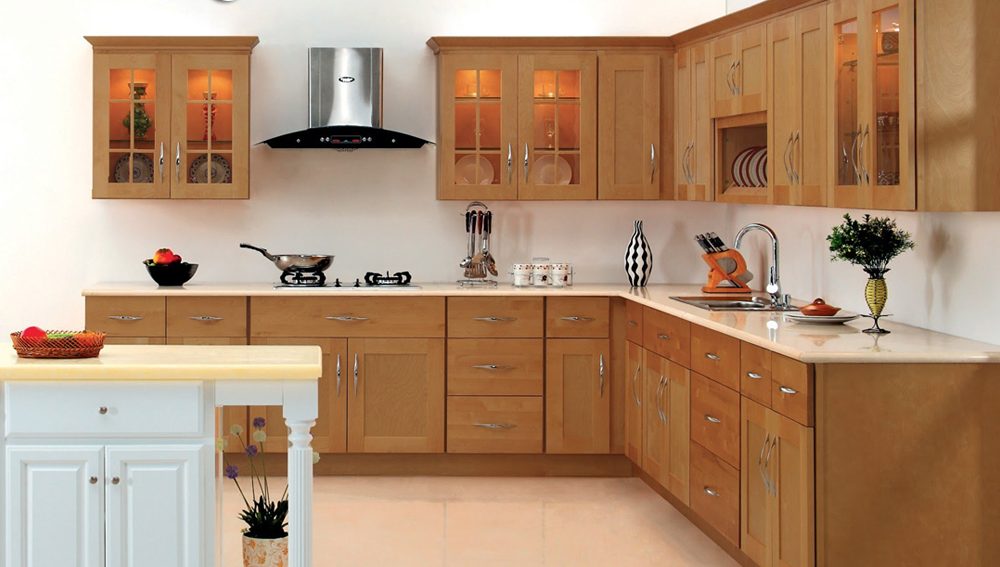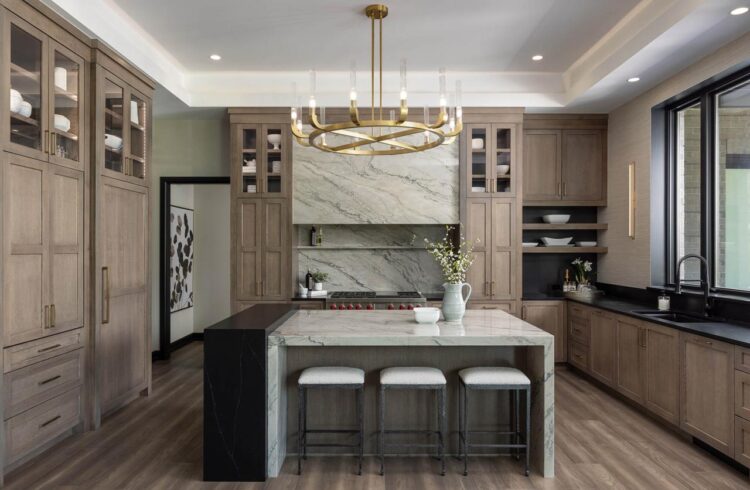In the contemporary world of home design and functional living, Innovation Cabinetry is no longer just about mere storage; it’s a testament to the seamless integration of aesthetics, utility, and cutting-edge technology to create smart storage solutions. Far from static boxes, modern cabinets are dynamic elements that enhance organization, streamline workflows, and elevate the overall living experience, embodying a new era of culinary and domestic efficiency. Understanding the evolution, key features, and profound impact of innovative cabinetry is crucial for homeowners, designers, and anyone seeking to optimize their living spaces for beauty, practicality, and future-forward living.
The Evolution of Storage

For centuries, cabinets served a basic purpose: enclosing items to keep them tidy or out of sight. While fundamental, this utilitarian role has dramatically expanded. Today, cabinets are central components of architectural design, blending seamlessly with smart home technologies and catering to highly specific lifestyle needs.
A. From Rudimentary Shelves to Intelligent Systems
The journey of cabinetry reflects broader advancements in material science, engineering, and digital integration.
- Early Storage: Initially, storage consisted of simple shelves or freestanding chests. The concept of built-in cabinetry emerged gradually, offering a more integrated solution.
- Mass Production and Standardization: The industrial revolution allowed for the mass production of modular cabinets, making them accessible but often uniform in design and limited in functionality.
- Ergonomic Design Focus: The mid-20th century saw an increased focus on ergonomics, with designers considering how users interact with cabinets to minimize strain and improve access. This led to features like pull-out shelves and lazy Susans.
- Material Advancements: New materials (e.g., laminates, composite woods, durable finishes) improved aesthetics, durability, and ease of maintenance.
- Smart Technology Integration: The current era is defined by the infusion of microprocessors, sensors, and connectivity. Cabinets now feature automated opening mechanisms, integrated lighting, charging stations, and even app-controlled features, transforming them into “smart” elements within the home.
- Customization and Personalization: Modern manufacturing techniques and design software enable an unprecedented level of customization, allowing cabinets to be tailored precisely to specific dimensions, aesthetic preferences, and unique functional requirements.
B. Why Innovative Cabinetry Matters
Investing in smart, innovative cabinetry goes beyond mere aesthetics; it profoundly impacts daily living, organization, and the long-term value of a property.
- Optimized Functionality: Innovative cabinets are designed to maximize every inch of space, providing specialized storage solutions for diverse items, from pantry goods to smart devices. This leads to unparalleled organization and reduces clutter.
- Enhanced Efficiency: Features like automated lift systems, integrated waste solutions, and strategic interior layouts streamline kitchen and living area workflows, making daily tasks quicker and more intuitive.
- Improved Aesthetics and Flow: Custom designs, premium materials, and seamless integration with appliances create cohesive, visually appealing spaces that enhance the overall ambiance of a home. They become architectural features, not just utilitarian boxes.
- Increased Property Value: High-quality, thoughtfully designed, and technologically integrated cabinetry is a significant selling point, often increasing a property’s appeal and market value to discerning buyers.
- Long-Term Durability and Sustainability: Modern construction techniques and durable materials ensure longevity, while smart features can contribute to energy efficiency (e.g., integrated lighting that turns off automatically).
- Accessibility and Inclusivity: Automated and adjustable features can make cabinets more accessible to individuals with mobility challenges or those of varying heights, promoting inclusive design.
- Future-Proofing: Designing with modularity and technological integration in mind ensures that cabinetry can adapt to future smart home advancements and evolving lifestyle needs.
Key Features and Elements of Innovative Cabinetry
Modern innovative cabinets are characterized by a blend of intelligent design, advanced materials, and integrated technology, all aimed at enhancing user experience.
A. Intelligent Interior Organization
Maximizing storage capacity and accessibility within the cabinet’s footprint is a hallmark of innovation.
- Pull-Out Pantry Systems: Full-extension pantry units with adjustable shelves or baskets that pull out completely, offering easy access to every item, even those at the back.
- Corner Storage Solutions: Clever mechanisms like “Lazy Susans,” “Magic Corners,” or kidney-shaped pull-outs that maximize the often-underutilized space in corner cabinets, bringing contents to the front.
- Drawer Dividers and Organizers: Customizable inserts for drawers that keep cutlery, utensils, spices, and small appliances neatly organized and easily accessible. This includes specialized knife blocks, spice racks, and plate holders.
- Vertical Storage Solutions: Tall, narrow pull-out cabinets for spices, oils, or cleaning supplies, optimizing awkward narrow spaces.
- Integrated Waste and Recycling Bins: Pull-out systems that hide waste and recycling bins within cabinets, maintaining a clean aesthetic and streamlining waste management.
- Pegboard Systems and Adjustable Shelving: Flexible interior walls or shelving systems that can be reconfigured to accommodate varying item sizes, promoting adaptability.
B. Automated and Motion-Sensing Technologies
Bringing convenience and a touch of futuristic elegance to daily interactions.
- Touch-to-Open/Close Mechanisms: Cabinets and drawers that open or close with a gentle touch or nudge, eliminating the need for handles and creating a sleek, minimalist aesthetic. This is particularly useful for integrated appliances.
- Motion-Sensor Lighting: Integrated LED lighting that illuminates cabinet interiors or countertops when a door is opened or motion is detected, enhancing visibility and safety.
- Automated Lift Systems: Wall cabinets or appliance garages with doors that silently lift and retract upwards at the touch of a button or with a gentle pull, providing unobstructed access.
- Motorized Drawers: Drawers that gently open or close automatically, often with soft-close features to prevent slamming.
- Foot-Activated Openers: For base cabinets, especially integrated waste bins, allowing hands-free opening when carrying items or when hands are full.
C. Integrated Smart Features and Connectivity
Connecting cabinetry to the broader smart home ecosystem for enhanced functionality and control.
- Integrated Charging Stations: Drawers or cabinet shelves with built-in USB ports, wireless charging pads, or even power outlets for small appliances, keeping devices charged and cords out of sight.
- Smart Pantry Inventory Systems (Emerging): Cabinets with sensors that track inventory levels, notify users when items are low, or even automatically add items to a digital shopping list. This is still largely conceptual but developing rapidly.
- Smart Appliance Integration: Seamlessly integrating smart ovens, refrigerators, and dishwashers within cabinetry, allowing for cohesive design and potential communication between appliances and cabinet systems.
- Voice-Controlled Lighting/Operation: Integration with smart home assistants (Alexa, Google Assistant) to control cabinet lighting or motorized mechanisms via voice commands.
- Integrated Displays/Screens: Small, hidden screens within cabinet doors that can display recipes, smart home controls, or messages.
D. Advanced Materials and Finishes
Beyond traditional wood, innovative materials offer durability, unique aesthetics, and enhanced performance.
- High-Gloss and Matte Laminates: Durable, easy-to-clean finishes that offer modern aesthetics and a wide range of colors.
- Engineered Wood Products: Materials like MDF (Medium-Density Fiberboard) or plywood with high-quality veneers offer stability, durability, and sustainability.
- Metal Accents: Incorporating steel, aluminum, or brass for handles, frames, or kick plates, adding industrial or luxurious touches.
- Glass and Acrylic: Using frosted, reeded, or transparent glass panels for cabinet doors, allowing for display or adding lightness to the design.
- Anti-Fingerprint Finishes: Special coatings that resist fingerprints and smudges, maintaining a pristine look with minimal effort.
- Antimicrobial Surfaces: Materials treated with antimicrobial agents, particularly relevant for kitchen and bathroom cabinetry, enhancing hygiene.
E. Ergonomic and Universal Design Principles
Designing for comfort, ease of use, and accessibility for all users, regardless of age or ability.
- Varying Heights and Depths: Custom cabinet heights and depths to accommodate different users or specialized equipment.
- Lever Handles vs. Knobs: Opting for easy-to-grip lever handles over traditional knobs for improved accessibility.
- Accessible Drawers vs. Deep Shelves: Prioritizing full-extension drawers over deep base cabinet shelves for easier access to contents without bending or reaching.
- Clearance and Workflow: Ensuring adequate clearance around islands and between opposing cabinet runs for comfortable movement and efficient workflow.
The Profound Impact for Domestic Life

Innovative cabinetry isn’t just about individual features; it’s about a systemic shift that impacts daily routines, home aesthetics, and overall quality of life.
A. Enhancing Organization and Decluttering
The primary benefit is a truly organized and visually appealing home.
- Place for Everything: Specialized storage solutions ensure every item has a designated home, reducing clutter on countertops and in living areas.
- Streamlined Routines: Optimized layouts and accessible storage make daily tasks (e.g., cooking, cleaning, finding items) more efficient and less frustrating.
- Visual Serenity: A clutter-free environment contributes to a sense of calm and order, reducing mental stress and enhancing overall well-being.
- Maximizing Space: Clever designs and interior organizers maximize the utility of every cubic inch, making even smaller homes feel more spacious and functional.
B. Elevating Aesthetics and Home Value
Thoughtfully designed innovative cabinetry is a significant aesthetic and financial asset.
- Seamless Integration: Handle-less designs, integrated appliances, and custom finishes create a sleek, cohesive, and sophisticated look that elevates the entire home’s aesthetic.
- Customization as Art: Bespoke cabinetry becomes a form of functional art, reflecting the homeowner’s unique style and contributing to a luxurious feel.
- Modern Appeal: The integration of smart tech and contemporary design keeps a home feeling modern and relevant, rather than outdated.
- Increased Resale Value: High-quality, functional, and aesthetically pleasing innovative cabinetry is a major draw for potential buyers, significantly increasing a property’s market value. It signals attention to detail and a high standard of living.
C. Improving Efficiency and Workflow
The strategic design of innovative cabinetry directly translates into more productive and enjoyable living.
- Reduced Friction in Daily Tasks: Automated opening, organized interiors, and easy access to essentials reduce the time and effort spent on mundane tasks, freeing up time for more enjoyable activities.
- Ergonomic Benefits: Thoughtful heights, accessible pull-outs, and soft-close mechanisms reduce bending, stretching, and jarring, making the kitchen and other areas more comfortable to use, especially for prolonged periods.
- Enhanced Cooking Experience: In kitchens, optimized layouts put tools and ingredients exactly where they’re needed, transforming the cooking process into a more fluid and enjoyable experience.
- Energy Savings: Integrated motion-sensor lighting within cabinets can lead to energy savings by ensuring lights are only on when needed.
Challenges and Considerations
While the allure of innovative cabinetry is strong, its integration presents specific challenges that require careful planning and a long-term perspective.
A. Cost and Investment
Cutting-edge design and technology come with a higher price tag than standard options.
- Higher Upfront Costs: Custom designs, premium materials, and integrated smart technologies significantly increase the initial investment compared to off-the-shelf cabinetry.
- Installation Complexity: Automated systems and integrated lighting require specialized installation, potentially increasing labor costs.
- Maintenance and Repair: Electronic components and specialized mechanisms may require more specific maintenance or repairs compared to traditional cabinetry, potentially leading to higher long-term costs.
- Compatibility: Ensuring compatibility between different smart home systems and integrated cabinet features can be complex.
B. Technical Obsolescence and Future-Proofing
The rapid pace of technological change raises concerns about long-term relevance.
- Technological Obsolescence: Smart features and integrated electronics could become outdated or incompatible with newer smart home ecosystems over time, necessitating costly upgrades or rendering features unusable.
- Software Updates and Support: Reliance on software means features may require regular updates or could cease to function if manufacturer support ends.
- Data Privacy Concerns: Smart cabinets with sensors or inventory tracking systems could collect data, raising privacy concerns if not managed transparently.
C. Design and Integration Complexity
Achieving seamless integration requires expertise and meticulous planning.
- Finding the Right Professionals: It requires working with designers and cabinetmakers who have expertise in innovative materials, smart home integration, and complex custom solutions.
- Meticulous Planning: Every detail must be meticulously planned to ensure that integrated technology, specialized organizers, and aesthetic elements work harmoniously.
- Balancing Aesthetics and Functionality: The challenge lies in ensuring that smart features and complex organizational systems enhance, rather than detract from, the overall aesthetic of the space.
- Resale Considerations: While often increasing value, a highly niche or technologically integrated design might require specific marketing to future buyers if the features are too specialized.
D. User Adaptation and Training
Homeowners may need to adapt to new ways of interacting with their cabinetry.
- Learning Curve: Users might need to learn how to operate new automated systems, integrate apps, or manage smart features.
- Dependence on Power/Connectivity: Automated features rely on electricity and internet connectivity. Power outages or Wi-Fi issues can render these features temporarily unusable.
The Future Trajectory of Smart Cabinetry
The evolution of innovative cabinetry will continue to be driven by advances in AI, IoT, material science, and a growing emphasis on personalized, sustainable, and adaptive living spaces.
A. AI-Powered Personalization and Automation
- Predictive Organization: Cabinets that learn user habits and suggest optimal storage locations or automatically reorder frequently used pantry items.
- Contextual Lighting: Lighting that adapts not just to motion but also to the time of day, current activity (e.g., bright for cooking, soft for evening ambiance), and user mood.
- Integrated Voice Assistants: Deeper integration of voice control for inventory checks, recipe guidance, and activating cabinet features.
B. Modular, Adaptive, and Sustainable Design
- Modular Systems: Cabinets designed as highly adaptable modules that can be easily reconfigured, moved, or expanded as needs change, supporting a more flexible living environment.
- Sustainable Materials: Greater use of rapidly renewable resources, recycled content, and materials with low embodied energy, alongside enhanced durability for longer lifespans.
- Circular Economy Principles: Cabinets designed for easy disassembly and material recovery at the end of their life cycle, reducing waste.
C. Enhanced Sensory and Experiential Elements
- Integrated Displays and Information: Cabinets with subtle, hidden displays that can show news, weather, recipes, or smart home controls.
- Aroma Diffusion: Subtle, integrated systems that release pleasant aromas at specific times (e.g., fresh bread smell in the morning).
- Health and Wellness Integration: Cabinets with integrated air purification systems, UV-C sanitation for dishes, or even smart mirrors with health tracking capabilities.
D. Seamless Digital and Physical Integration
- Augmented Reality (AR) for Design and Use: AR apps that allow users to virtually “try on” different cabinet styles and finishes in their home before purchase, or overlay cooking instructions onto countertops.
- Robotics in Storage (Conceptual): While futuristic, the concept of small robotic systems within large pantries that can retrieve specific items or manage inventory autonomously.
Conclusion
Innovation Cabinetry is no longer a peripheral element in home design; it is a central pillar, transforming functional storage into an integrated, intelligent system that truly embodies smart storage. By meticulously blending advanced materials, ergonomic design, and cutting-edge technology, these cabinets are elevating aesthetics, optimizing functionality, and profoundly enhancing the daily lives of homeowners.
While the journey of implementing innovative cabinetry involves considerations around cost, technological evolution, and complex integration, the profound benefits – from unparalleled organization and streamlined workflows to enhanced aesthetics and increased property value – are undeniable. As our homes become increasingly intelligent and responsive, innovative cabinetry will continue to define the very heart of the smart home, proving that thoughtful design and technological foresight can elevate the mundane into truly exceptional living experiences. The future of domestic efficiency is being elegantly stored, one smart cabinet at a time.













